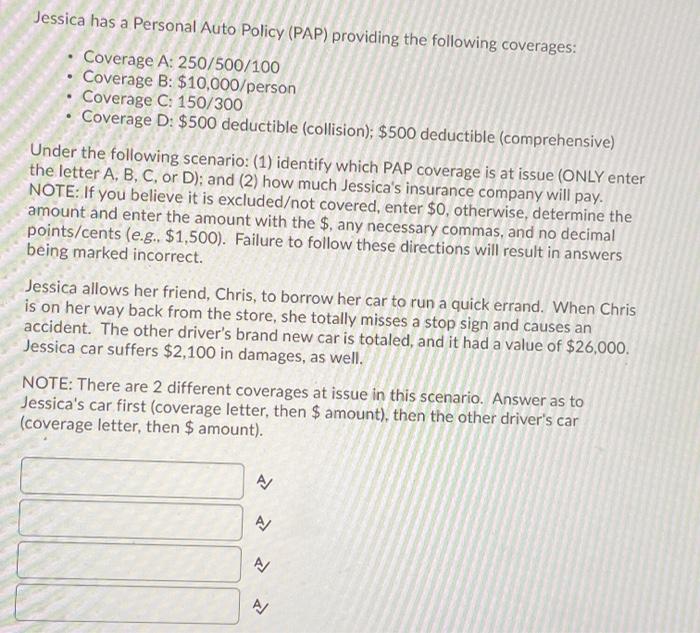Answered step by step
Verified Expert Solution
Question
1 Approved Answer
Jessica has a Personal Auto Policy (PAP) providing the following coverages: Coverage A: 250/500/100 Coverage B: $10,000/person Coverage C: 150/300 Coverage D: $500 deductible (collision);


Step by Step Solution
There are 3 Steps involved in it
Step: 1

Get Instant Access to Expert-Tailored Solutions
See step-by-step solutions with expert insights and AI powered tools for academic success
Step: 2

Step: 3

Ace Your Homework with AI
Get the answers you need in no time with our AI-driven, step-by-step assistance
Get Started


